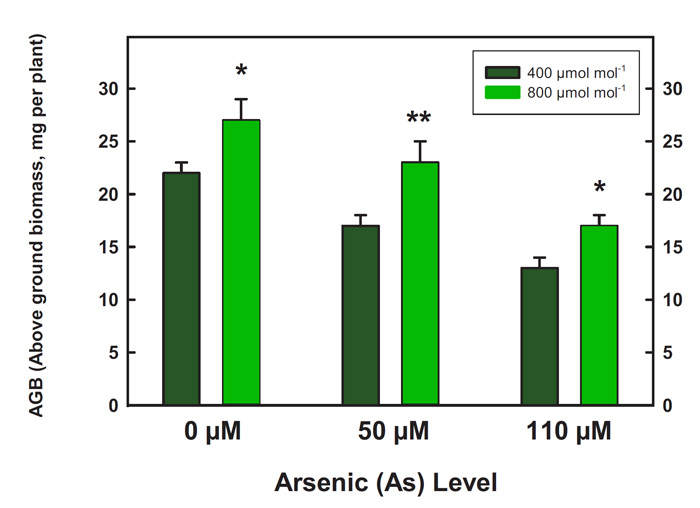| Tweet | Follow @co2science |
Paper Reviewed
Fernandez, V., Barnaby, J.Y., Tomecek, M., Codling, E.E. and Ziska, L.H. 2018. Elevated CO2 may reduce arsenic accumulation in diverse ecotypes of Arabidopsis thaliana. Journal of Plant Nutrition 41: 645-653.
Across the world, some soils contain high concentrations of metals that prove toxic to many plants. However, some plant species are more tolerant of such heavy metal toxicity than others. These species are often utilized for phytoremediation, which process utilizes plants to mitigate or neutralize soil toxins without the physical excavation of the soil to remove the toxin.
Writing as background for their work, Fernandez et al. (2018) state that "it is widely acknowledged that rising levels of atmospheric carbon dioxide can stimulate photosynthesis and plant biomass," adding that this "faster growth and greater biomass, in turn, could enhance phytoextraction and toxin uptake in above-ground plant tissue."
In an effort to see if this is indeed the case with respect to soils contaminated with arsenic, the team of five researchers grew five thale cress (Arabidopsis thaliana) ecotypes under ambient (400 ppm) or elevated (800 ppm) CO2 and three levels of soil arsenic concentrations of 0, 50 and 110 µM for approximately five weeks.
As shown in the figure below, Fernandez et al. report that elevated CO2 "increased above ground biomass by ~29% relative to ambient CO2 when averaged over all A. thaliana ecotypes and arsenic treatments." Arsenic tissue concentration (µg g-1) was unaffected by elevated CO2 at the 50 µM treatment level, but significantly reduced in the 110 µM treatment. Total arsenic uptake (µg plant-1) was also reduced at the highest arsenic treatment, but enhanced at the 50 µM treatment. Thus, elevated CO2 reduced both arsenic tissue concentration and whole plant uptake in the thale cress cultivars at the highest arsenic treatment level (110 µM), yet increased the uptake (but not concentration) at the 50 µM treatment. Given as much, it would appear that thale cress may not be the optimum candidate for phytoremediation of highly contaminated arsenic soils; but at intermediate levels of arsenic contamination it may be suitable. And, whatever the degree of soil contamination by arsenic, elevated CO2 will likely improve the growth/biomass of this plant.

Figure 1. Average (± SE) of above-ground biomass for all A. thaliana ecotypes grown at either ambient (400 µmol mol-1) or elevated (800 µmol mol-1) CO2 at each of three Arsenic (As) concentrations (0, 50, and 110 mM). Source: Fernandez et al. (2018).




